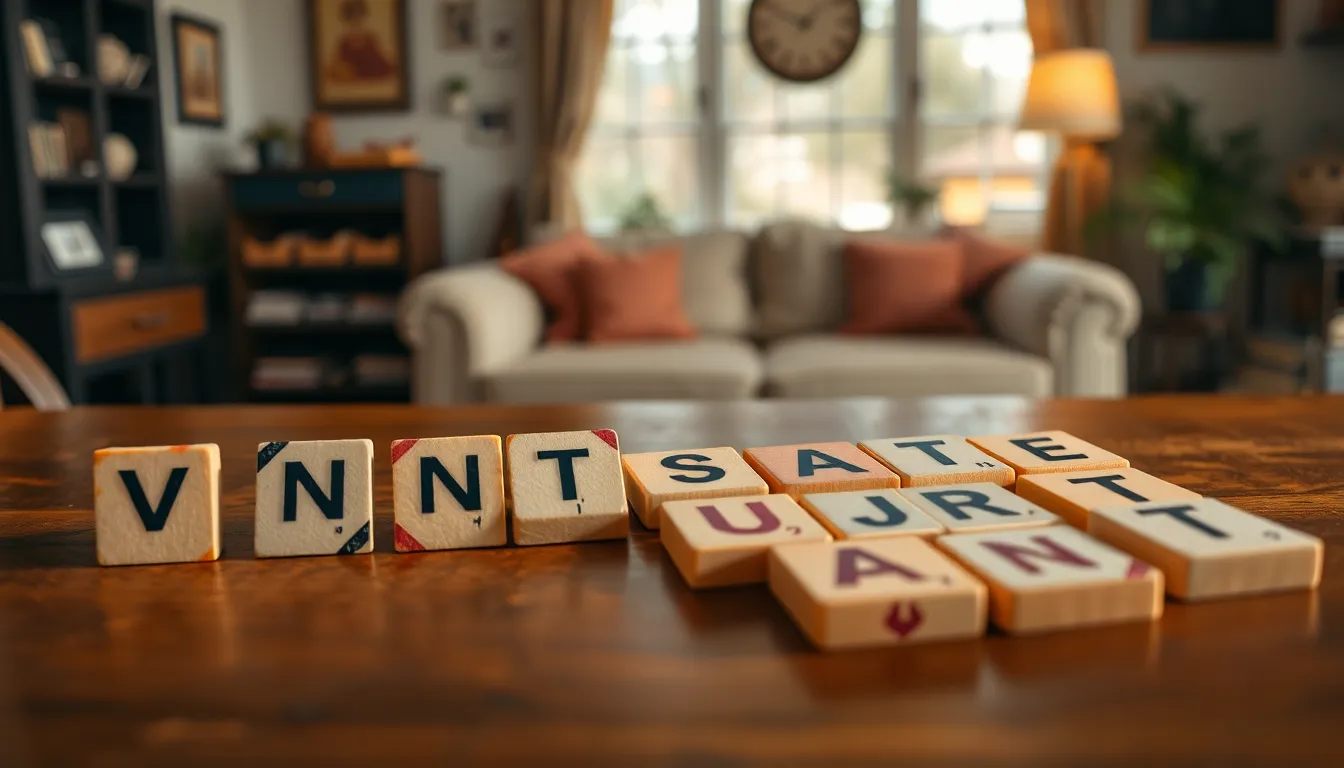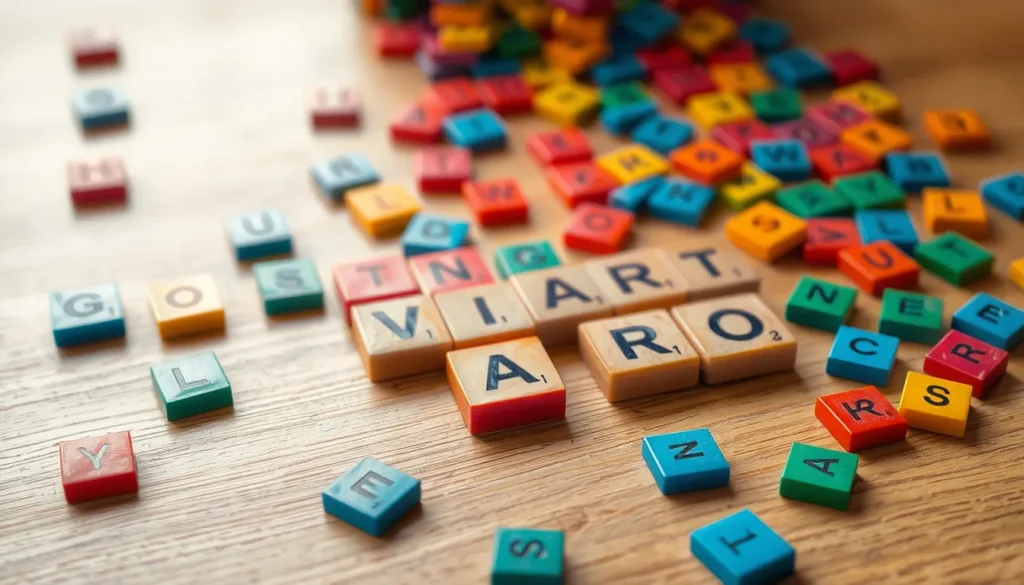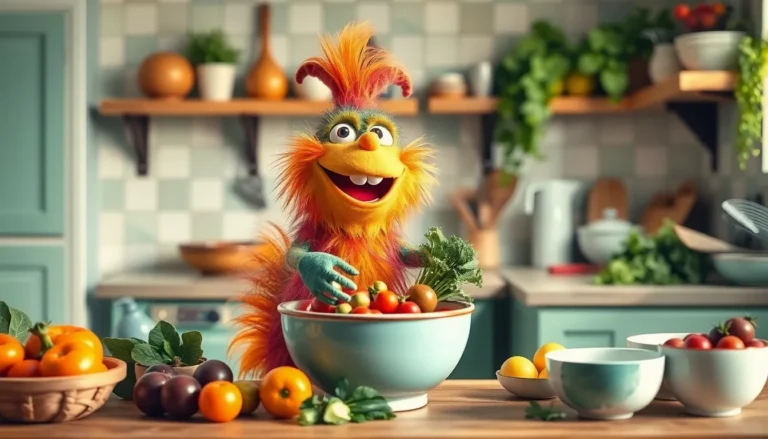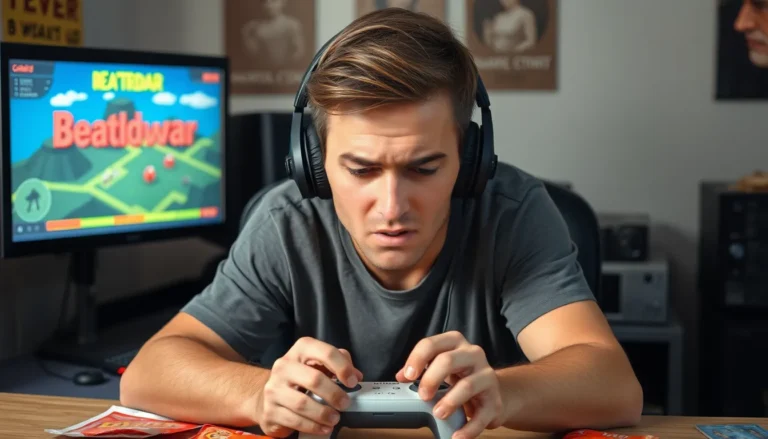Ever stared at a jumble of letters and thought, “What on earth can I make with this?” Well, you’re not alone. Whether it’s a game of Scrabble or just a brain teaser, discovering words from a handful of letters can feel like a mini adventure. It’s like finding hidden treasures in a sea of chaos, and who doesn’t love a good treasure hunt?
Table of Contents
ToggleUnderstanding Letter Combinations
Finding words from jumbled letters involves understanding letter combinations. This skill enhances vocabulary and improves problem-solving capabilities.
Importance of Anagramming
Anagramming fosters creativity and sharpens cognitive skills. This process requires recognition of patterns within the letters. Players gain insights into word formation, which aids in language proficiency. Engaging with anagrams boosts mental agility. Puzzle enthusiasts often enjoy the challenge of rearranging letters to uncover hidden words.
Strategies for Finding Words
Using specific strategies increases success in word formation. Focus on identifying common prefixes and suffixes in the letter group. Segregating vowels and consonants simplifies the process. Attempt forming shorter words first, then build on them. Utilizing online word solvers can provide additional assistance. Practicing with word puzzles regularly strengthens skills and boosts confidence.
Common Letter Patterns

Identifying letter patterns plays a critical role in word formation. Understanding the distribution of vowels and consonants aids in creating valid words.
Vowel and Consonant Distribution
Distribution of vowels and consonants shapes the ability to form words. Typically, English words contain a mix of both; focusing on this balance helps. Vowels such as A, E, I, O, and U often appear in various combinations. Consonants surround these vowels, creating structure. For instance, in a mix of ten letters, one might find three vowels and seven consonants. Analyzing this arrangement helps in brainstorming potential words quickly.
Syllable Structure
Syllable structure offers insight into word formation as well. A syllable consists of a vowel sound and can include surrounding consonants. Common patterns like CV (consonant-vowel) or CVC (consonant-vowel-consonant) showcase how letters connect. For example, “cat” and “go” demonstrate this structure effectively. Recognizing these patterns facilitates the identification of longer words. By combining syllables, a player can also develop strategies for playing games.
Tools and Resources
Finding the right tools can enhance the experience of creating words from letters. Various resources exist to assist players in their word-forming endeavors.
Word Generators
Word generators provide efficient ways to create potential words from given letters. Numerous online platforms exist, allowing users to input their letter combinations to receive a list of valid words. These tools often filter results based on word length or type, making it easier to discover options. Some generators even include options for filtering out common prefixes or suffixes, which can sharpen focus on unique words. Sites like WordFinder or Anagram Solver prove particularly useful for players looking to maximize their vocabulary during games.
Online Dictionaries
Online dictionaries serve as essential references for verifying word meanings and spellings. Players can look up definitions to ensure comprehension of each word. Besides standard dictionaries, specialized resources include tools tailored for word games, providing information about acceptable terms in various contexts. Websites like Merriam-Webster or Collins Dictionary offer extensive databases that include word usage examples and variations. Understanding the nuances of words often contributes to better gameplay strategies and vocabulary expansion.
Creative Applications
Creative uses of letters can enhance language skills and encourage playful exploration of words. Discovering new words provides enjoyment across various activities.
Word Games and Puzzles
Word games and puzzles offer fantastic outlets for engaging with letters. Players can use a set of letters to form words in timed challenges and tournaments, honing their spelling and vocabulary. Games like Scrabble challenge participants to strategically build words and maximize points. Engaging with word search puzzles promotes pattern recognition, essential for effective word formation. Exploring crossword puzzles can aid in expanding knowledge of less common words. Overall, word games spark creativity while providing entertainment and mental exercise.
Educational Uses
Educational settings can benefit significantly from letter-based activities. Teachers often use word-building exercises to foster vocabulary development in students. Incorporating letter jumble challenges into lessons encourages critical thinking and collaborative learning. Students can enhance spelling abilities while they identify suitable word combinations. Programs that include letter games help reinforce phonics and language concepts, making learning interactive. These applications support diverse learning styles, ensuring students gain confidence in their language skills.
Exploring words formed from a random assortment of letters opens up a world of possibilities. This engaging activity not only enhances vocabulary but also sharpens cognitive skills. By recognizing patterns and utilizing strategies, players can unlock their potential in word games and puzzles.
The tools and resources available further enrich the experience, allowing for efficient word discovery and verification. As individuals dive into this linguistic adventure, they not only have fun but also foster creativity and critical thinking. Embracing the challenge of word formation can lead to greater confidence and proficiency in language, making it a rewarding pursuit for learners of all ages.





